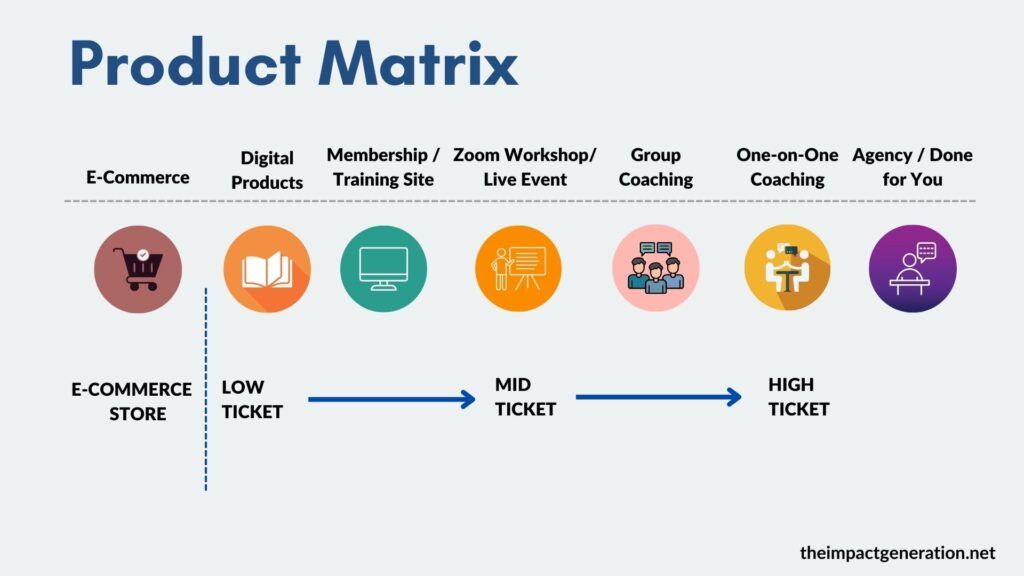Introduction
Step three of the One Workshop Away model is to test the economic viability of your idea with a workshop. This is the step that defines our model. You are literally one workshop away from the confidence and data you need to move forward with your venture.
I first want to give you some important context for why we are so high on workshops:
Nine Reasons Why Workshops Rock
Below are nine reasons why our One Workshop Away model is hard to beat:
#1 – You can quickly validate an idea BEFORE you create a single digital asset
This is biggest reason why I love workshops. Before learning complicated software or building elaborate funnels, trainings, a website, logo, or a marketing campaign, you can determine if your audience wants your solution via a simple workshop.
This is going to save you months of time, headaches, wrong turns, and money. It might even save you from abandoning your business idea altogether based on overwhelm and frustration.
#2 – They have a high perceived value
There is something very special and dynamic about jumping onto a live training with an expert around a particular topic.
Folks love the experience!
The product matrix above measures the perceived value. The further right you go, the higher the value since your participants have more direct access to you.
#3 – Time to execution is fast
To create a one-hour workshop requires little time or up-front preparation. If you have an expertise, the challenge will be trimming down what you can say. Also, there is no long sales page to create, nor a complicated presentation.
#4 – High return on investment
Because time to execution is quick, the return on investment (ROI) relative to the time invested is high. Prices can range from $19 to $47 depending on the value of the topic. The price point is almost an impulse buy for many people which means a greater number of participants.
If you deliver a regular workshop (2-8 hours) prices can start at $100. I recently attended an 8-hour workshop with 250 other participants. Each of us paid $100. You can do the math.
#5 – They are low-tech
There are no complicated sales pages, websites, funnels, videos, or courses to produce with a micro workshop. It can be as simple as a Google doc with a Paypal button.
Ultimately, the success of a micro workshop depends on:
- Whether the problem you solve is compelling enough
- Whether you have cultivated the right audience
- The relationship and trust that you have with your audience
The tech is secondary.
#6 – They are low-cost
Because you are validating your offer BEFORE you create any digital assets, you don’t have to invest in fancy software or equipment (yet). This includes funnel builders, checkout software, training platform, screen capture software, microphone, or camera.
#7 – They build trust, goodwill, and authority
A micro workshop allows you to share your expertise and make an impact on your audience. This means you are solving a real problem that moves your peeps toward their ultimate goal. This creates instant authority around your topic. Finally, delivering on your expertise generates trust and goodwill which are major currencies of the Internet.
#8 – Excellent feedback loop
A live workshop gives you great insights in many areas.
You can test new ideas, or gauge reaction to the topic in real time. You can ask questions of your participants, and they can ask questions of you. Some of the questions may surprise you, giving you feedback to improve on your next workshop or an idea for a new product.
#9 – Pathway to other offers or your high-ticket products
Finally, because you establish trust and authority, a workshop is the best time to introduce THE NEXT problem that your audience needs to solve.
After all, both you and your participants will have gotten a small taste of what it’s like working with each other. A micro workshop is often the place when some in your audience will decide they want to work with you long-term.
The Product Matrix

This picture represents your monetization options as a digital entrepreneur. You can also see the relationships between price, ease of production, and perceived value of any “product.”
Products to the left are easier to produce but have less perceived value and command a lower price. Products to the right are harder to produce but have a higher perceived value and command a higher price.
But notice where the workshop fits into the graphic.
It’s right in the middle, almost like a bridge between your low-ticket and high-ticket offers. A workshop is easier to produce than the products to its left. Because it’s a live presentation, it has a high perceived value so you to charge a premium.
Two Types of Workshops
As I have worked with prospects on developing their workshops, or have studied the market, I’ve come to realize there are two types of workshops:
- Micro workshop (1.5 hours including Q&A) – Solves a small (but annoying) problem for your audience. This is typically an impulse buy ($19-$47).
- Regular workshop (2-8 hours including Q&A) – Solves a bigger problem for your audiences, hence the longer training times. Usually starts at $100 and can go up to several hundred dollars depending on the quality of the problem you solve and your audience.
I am going to suggest you develop a micro workshop, build up to a regular workshop, and then begin building a business around an idea you have validated. In other words, folks have handed over their cash to receive the value you provide.
Having said that, I have had students that want to teach a longer workshop right from the start. This is OK. Everything I will teach going forward applies to longer workshops as well. They will simply involve a bigger investment of time. But they still beat traditional business models when it comes to a higher likelihood of success.
Micro Workshops
With this background, let me give you a brief description of what you would be creating. I use the term micro workshop because I want to remove any notions of complexity from your mind.
- You are creating something simple and very specific.
- You are solving ONE small problem for your audience which forms part of your larger signature solution.
- It should be one hour in length not including Q & A (but no more than 1.5 hours total).
As you go through the Know Yourself and Know Your Audience exercises, you want to start separating out little problems you can solve or goals you can help achieve based on your unique set of skills and experience.
The biggest mistake with micro workshops is trying to teach too much!
With these preliminary observations, now it’s time to move on to the mechanics of developing a micro workshop.

